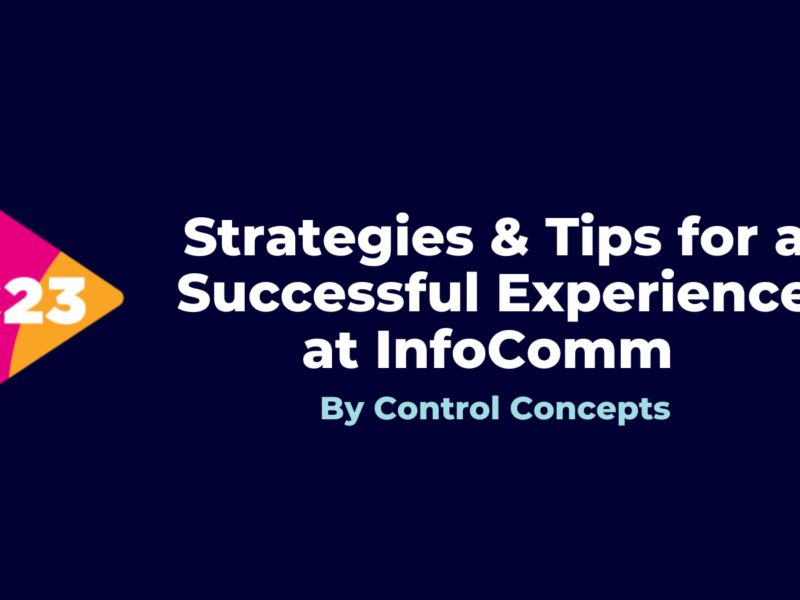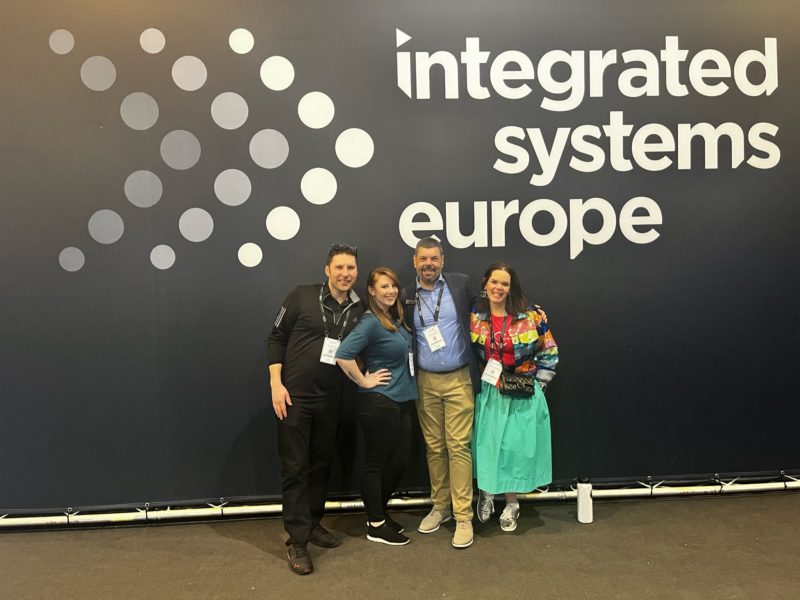
Employee Retention—Before “I Quit”
For more than a decade, there has been a shortage of talent entering the AV industry. With an overall staffing shortage and the “I quit” movement, you can’t afford not to reevaluate your recruiting and retention policies.
When organizations look to bolster their teams to keep up with client demands, or expand to capitalize on increased opportunities, their typical reaction is to focus on hiring and recruitment. While this seems like the obvious, sensible solution for a time-sensitive need—what’s too often overlooked is the importance of retention and the development of current staff.
Recruitment should be a regular activity for any organization that is growth minded or forward thinking. What also needs to be considered, especially by smaller companies, is that the most effective recruiting is done when the need to hire is not urgent. By patiently allowing the hiring process to take ample time, both the employer and the candidate have the opportunity to verify a common commitment, confirm shared core values, communicate and agree upon expectations of the role, and validate a buy-in to a future vision. Finding this right fit can be a critical step toward long-term job satisfaction, career success, and retention for an organization. When recruiting under pressure or out of desperation, priorities become skewed, sound decisions become compromised, and a potential long-term fit is sacrificed for a short-term win. In the end, while rapid recruiting can address the demand for additional production or capacity, the tradeoff for expediency is a financial, energetic, and time investment in a team member that will likely not pan out. More important to consider, however, is the impact that an improper hire can have on an existing team.
An employer-employee relationship can simply not work out for a multitude of reasons—anything from misunderstood expectations, subpar performance, inadequate compensation, cultural misalignment, or absence of future growth or potential. As with any relationship, responsibility for these contributing factors lies with either or both parties. Whatever the cause, it is important to understand how to minimize the likelihood of it happening again, as well as to prevent damage to the existing team. Whether in a large company or small, for smaller teams, any hire is considered major growth and should be treated as such. It is not only important that the new addition contributes positively to the organization as an individual, but also that they mesh with others on the team and raise up the group as a whole. While the prospect of an ambitious and productive new hire is certainly appealing, the net impact can be nonexistent—or worse, detrimental—if others around them are negatively impacted.
Balancing the Effort
Considering the many challenges of recruitment, as well as the investment involved in hiring the right person—doesn’t it make sense that a comparable effort should also be put into retention?
Successful employee retention starts during the hiring process, with defining the responsibilities of the role; establishing expectations for success; and documenting company standards of excellence, core values, and operational guidelines. By establishing these criteria upfront and having an agreed-upon understanding of what to expect with regard to employment, the relationship will be off to a promising start. As time passes and rapport is built, it is important for managers to develop awareness of each team member’s personality, priorities, strengths, weaknesses, and values—so that management styles can be adjusted, reward systems customized, and motivational strategies catered to each individual for maximum effectiveness. This is particularly important for team members of different generations.
[ The Hidden Challenges of AV Control Programming ]
[ Tips for Training Your AV Team ]
[ Improving Project Hand-Off ]
Addressing Generation Gaps
Although everyone values the importance of monetary compensation, members of each generation have different perspectives when it comes to what they value in an employment relationship. Older generations (Gen X and Boomers) want to be presented with opportunities for promotion, leadership, respected job titles, and time off; younger generations (Millennials and Gen Z) identify with roles providing long-term stability, career growth, opportunities to learn and have their voices heard, scheduling flexibility, and the knowledge that their role in the organization makes a difference.
An undeniable, yet often overlooked fact is that everyone likes to have a good time. Companies that facilitate social interaction, camaraderie, and fun typically benefit from this healthy culture and see higher levels of employee retention. Teams that bond through non-work-related discussions, or share common interests, hobbies, or tastes find more ways to connect—resulting in more effective communication on and off the job. By providing opportunities for team building through company-supported learning, social, and leisure activities, relationships can be built and strengthened amongst members of a team or organization on many levels.
Can We Talk?
Too often, employees seek other work options as a result of lingering issues that go unaddressed. By encouraging open communication and holding regular one-on-one meetings between managers and individual team members, roadblocks can be overcome, challenges worked out, and solutions identified for the benefit of everyone involved. The alternative can often result in nagging issues that fester and worsen. Something that was at one time easily addressed can snowball and even become a reason for severing a relationship. With frequent dialog—both casually and on a formal schedule—sticking points, misunderstandings, and hard feelings can be alleviated.
With remote work becoming more widely accepted in many industries, including AV, there is a greater focus on scheduling freedom, autonomy, and acceptance of work-life balance for employees. By exhibiting trust, providing flexibility, and demonstrating consideration for personal needs, employers can not only stimulate greater productivity, but they can also cultivate happier and more committed team members. Remote work requires a a greater dedication to effective communication, a conscious effort to stay connected, and a focused discipline to maintain productivity. While the offer of a remote work arrangement may be critical to the acquisition and retention of employees, its effectiveness requires effort from both parties.
A Promising Future
Finally, employee retention results from the confidence of a promising future. Whether it is an enticing career path, an opportunity for personal development, access to training and education, or the ability to become a leader, most employees remain at an organization to grow. Without opportunities to advance their skills or progress in their roles, employees will feel stagnant and look elsewhere to satisfy their professional goals.
While organizations are working hard to keep pace with increased business demands and opportunities, they must consider the importance of caring for their existing team before pursuing new additions. Without an effective retention strategy, even the best recruitment will not result in a net gain. In fact, the cost of poor retention will not only be monetary, but it will impact morale, reduce confidence, and translate into poor client satisfaction. While it may initially seem easier to focus on hiring to address labor needs, the key to successful growth may be actually be found in retention. Maintaining a passionate team that is committed to the future of the organization will prove more beneficial than simply adding staff to increase bandwidth and availability.
(Image credit: Getty Images)
- Post Tags:
- AV career
- av industry
- AV Network
- Posted In:
- Media
You might also like
-
Why is it Important to Attend InfoComm? https://controlconcepts.net/wp-content/uploads/2022/04/Copy-of-Strategies-Tips-for-a-Successful-Experience-at-InfoComm23-1024x576.png 1024 576 Steve Greenblatt Steve Greenblatt https://secure.gravatar.com/avatar/2e3b2cb4ec84edcb6983a3711b205d17e3232bf366d96099b3291c500d06f4b2?s=96&d=mm&r=g

-
-




